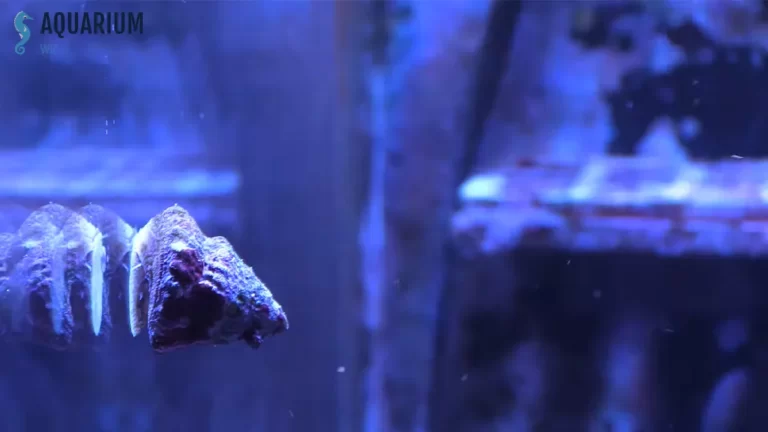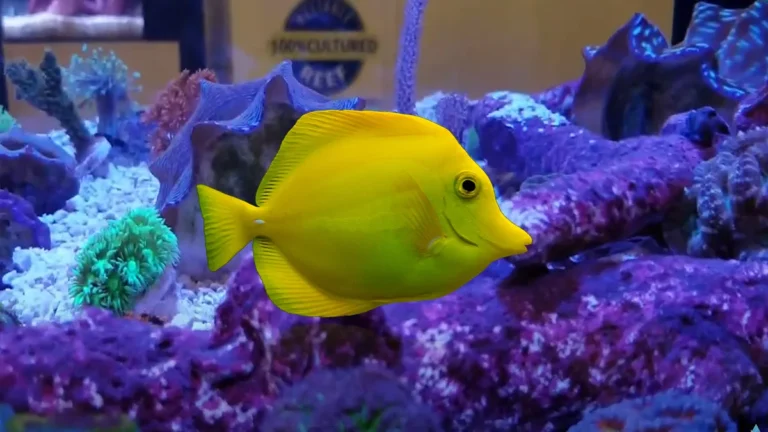Hellfire Torch Coral | Care , Propagation and Threats
If you’re captivated by the beauty of this coral species and have decided to bring its vibrant charm into your aquarium, you’re in the right place.
In this article, we’ll delve into the essential care and maintenance practices that will help you ensure the health and vitality of your Hellfire Torch Coral. From tank requirements to feeding tips and maintenance strategies, we’ve got you covered.
Let’s dive into the world of Hellfire Torch Coral care and discover how to create an environment in which it can thrive for years to come.
Understanding Hellfire Torch Coral
Hellfire Torch Coral is a type of branching coral that is native to Indonesia. It is a color morph of the Euphyllia glabrescens species, which is also known as the Torch Coral. The Hellfire Torch Coral is a favorite among collectors and hobbyists due to its unique appearance and vibrant colors.
Hellfire Torch Coral typically develops in a branching pattern and has long, draping tentacles. The tentacles are usually pink or purple at the tips and have a half-gold color with green stripes above the septa, close to the mouth at the base of the tentacles. The Hellfire Torch Coral is known for its bright and vibrant colors, making it a beautiful addition to any aquarium.
To care for Hellfire Torch Coral, it is important to maintain proper water flow and water parameters. The coral thrives in moderate water flow and moderate lighting conditions. It is also important to ensure that the water temperature is within the appropriate range and that the water quality is high.
Feeding Hellfire Torch Coral is relatively easy. The coral is photosynthetic and derives much of its nutrition from the light it receives. However, it can also benefit from supplemental feeding. It is recommended to feed the coral once or twice a week with small pieces of meaty foods, such as shrimp or squid.
Propagation of Hellfire Torch Coral is possible through fragging. Fragging involves cutting a small piece of the coral and attaching it to a rock or other substrate. With proper care, the fragment will grow into a new coral.
Caring for Hellfire Torch Coral
When it comes to caring for Hellfire Torch Coral, there are a few things to keep in mind to ensure its health and longevity. This section will cover the aquarium requirements and feeding and nutrition needs of this coral.
Aquarium Requirements
Hellfire Torch Coral requires a moderate water flow and moderate light intensity. It is recommended to place the coral in the low to middle region of the aquarium. The coral is not particularly demanding when it comes to water parameters, but it is important to maintain stable levels of pH, salinity, and temperature. It is also recommended to perform regular water changes to keep the water clean and free of harmful pollutants.
Propagation of Hellfire Torch Coral is possible through fragging, which involves cutting a piece of coral and attaching it to a new substrate. However, it is recommended to leave this to experienced aquarists as it can be a delicate process.
Feeding and Nutrition
Hellfire Torch Coral is a photosynthetic coral that obtains most of its nutrition from light. It also has a symbiotic relationship with zooxanthellae, which are photosynthetic algae that live within the coral’s tissue. However, the coral can also benefit from supplemental feedings of small meaty foods such as brine shrimp, mysis shrimp, or plankton.
It is important not to overfeed the coral as this can lead to nutrient imbalances and water quality issues. It is recommended to feed the coral once or twice a week, and to ensure that any uneaten food is removed from the aquarium to prevent it from decomposing and polluting the water.
Overall, with proper care and attention, Hellfire Torch Coral can be a beautiful and rewarding addition to any reef aquarium.
Propagation of Hellfire Torch Coral
Hellfire Torch Coral is a relatively easy coral to propagate. It can be propagated through two main methods: fragging and division.
Fragging
Fragging involves cutting a piece of the coral and then attaching it to a new substrate. To frag a Hellfire Torch Coral, you will need a sharp pair of scissors or a scalpel. Cut off a small piece of the coral, making sure to leave enough flesh to regrow. Then, attach the fragment to a new substrate using glue or fishing line. Place the new fragment in a low-light area and wait for it to grow.
Division
Division involves separating the coral into two or more pieces. To divide a Hellfire Torch Coral, you will need a sharp pair of scissors or a scalpel. Cut the coral into two or more pieces, making sure to leave enough flesh to regrow. Then, attach the new pieces to a new substrate using glue or fishing line. Place the new pieces in a low-light area and wait for them to grow.
It is important to note that Hellfire Torch Coral is a slow-growing coral, so it may take some time for the new fragments or divisions to grow. It is also important to maintain proper water parameters and lighting conditions to ensure the new coral pieces thrive.
Overall, fragging and division are both effective methods for propagating Hellfire Torch Coral. With proper care and patience, you can easily grow your collection of this beautiful and unique coral.

Threats and Conservation Status
Hellfire torch coral, like many other coral species, faces numerous threats that impact coral reefs globally. Poor land management practices that release more sediment, nutrients, and pollutants into the oceans can stress the fragile reef ecosystem. This can lead to coral bleaching events, which are becoming more frequent due to global climate change.
In addition to these global threats, local anthropogenic factors such as overfishing, destructive fishing practices, and coastal development can also cause significant environmental change. These factors can lead to the loss of habitat and a decline in the abundance of coral species like the hellfire torch coral.
The conservation status of the hellfire torch coral is currently unknown. However, the International Union for Conservation of Nature (IUCN) has listed many other coral species as vulnerable, endangered, or critically endangered due to their declining populations. It is likely that the hellfire torch coral faces similar threats and conservation concerns.
Efforts to conserve coral reefs and the species that inhabit them are crucial. Coral reefs are one of the most diverse ecosystems in the world and provide significant ecological and economic resources for humans. Conservation efforts can include the establishment of marine protected areas, the implementation of sustainable fishing practices, and the reduction of greenhouse gas emissions to combat climate change.
Overall, it is important to recognize the threats facing the hellfire torch coral and take action to protect this species and the coral reefs it inhabits.
Read More: Rainbow Chalice Coral Care, Tank Setup and Diseases
Hellfire Torch Coral in Aquaculture and Trade
The Hellfire Torch Coral is a popular species among coral collectors and hobbyists due to its unique coloration and branching pattern. It is typically found in Indonesia and is a color morph of the torch coral family. As a result of its popularity, it has become a sought-after species in the aquaculture and trade industry.
Aquaculture of the Hellfire Torch Coral involves the process of breeding and growing the coral in a controlled environment. This method allows for the production of a large number of corals that are genetically identical to the parent colony. Aquacultured corals are often preferred over wild-caught corals because they are less likely to carry diseases and have a higher survival rate.
The Hellfire Torch Coral is also commonly traded in the coral industry. It is often sold as a frag, which is a small piece of coral that can be attached to a rock or plug and grown into a larger colony. When purchasing a Hellfire Torch Coral, it is important to ensure that it has been ethically sourced and not illegally harvested from the wild.
In recent years, there has been a growing concern about the impact of the coral trade on wild populations. To address this concern, many aquarists and coral collectors are turning to aquacultured corals as a sustainable alternative. By supporting the aquaculture industry, individuals can help reduce the demand for wild-caught corals and promote the conservation of coral reefs.
Related Post: Dragon Soul Torch Care: Everything You Need to Know
Hellfire vs Dragon Soul Torch
Hellfire and Dragon Soul Torch Coral are two popular species that are often compared due to their similar appearance. However, there are some key differences between the two that are important to note.
Appearance
Hellfire Torch Coral typically has a gold base color with green tips, while Dragon Soul Torch Coral has a light purple base color that transitions to cyan-colored tips. The green tips on the Hellfire Torch Coral can also have green striping on top of the gold striping. Dragon Soul Torch Coral is known for its bright colors and is one of the most sought-after torches in the hobby.
Care
Both Hellfire and Dragon Soul Torch Coral require similar care. They prefer moderate to high lighting and moderate to high flow. They also require regular feedings of planktonic foods, such as phytoplankton or zooplankton. It is important to note that Torch Coral can be sensitive to changes in water parameters, so it is important to maintain stable water conditions.
Availability and Price
Hellfire Torch Coral is more readily available in the hobby and is typically less expensive than Dragon Soul Torch Coral. However, prices can vary depending on the size and coloration of the coral.
In summary, while Hellfire and Dragon Soul Torch Coral may appear similar, there are distinct differences in their appearance, care requirements, and availability in the hobby. It is important to do research and consider these factors when deciding which coral to add to your aquarium.
Frequently Asked Questions [FAQs]
What lighting intensity does Hellfire Torch Coral need?
A1: Provide moderate to high lighting. Place the coral where it receives sufficient light without direct, intense exposure.
Can I place Hellfire Torch Coral near other corals?
A2: Yes, but maintain a safe distance to prevent stinging interactions. Give it room to grow without crowding neighboring corals.
How do I acclimate the coral to my tank?
A3: Gradual acclimation is vital. Drip acclimate by slowly adding tank water to the coral’s bag over an hour, allowing it to adjust to new water conditions.
How can I tell if my Hellfire Torch Coral is healthy?
A7: Regularly inspect the coral for vibrant coloration, extended polyps, and steady growth. Watch for signs of bleaching, tissue recession, or unusual behavior.
Related Post:





